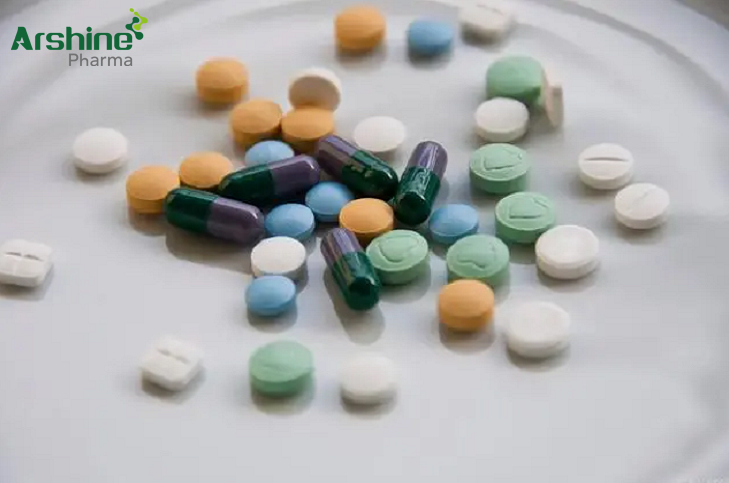
Introduction:
Gliclazide is an oral antidiabetic medication belonging to the sulfonylurea class. It is widely used for the management of type 2 diabetes mellitus, a chronic metabolic disorder characterized by insulin resistance and impaired insulin secretion. Gliclazide helps regulate blood sugar levels by stimulating the release of insulin from the pancreas. This article aims to provide a detailed description of the role and efficacy of gliclazide, exploring its mechanism of action, clinical applications, potential benefits, and safety considerations.
-
Mechanism of Action: Gliclazide works by binding to sulfonylurea receptors on the pancreatic beta cells, which leads to the closure of ATP-sensitive potassium channels. This closure causes depolarization of the cell membrane, leading to the influx of calcium ions and subsequent release of insulin. Gliclazide primarily enhances the release of the first-phase insulin secretion, thereby improving postprandial glucose control.
-
Clinical Applications: a) Type 2 Diabetes Management: Gliclazide is commonly prescribed as a monotherapy or in combination with other oral antidiabetic medications to achieve glycemic control in patients with type 2 diabetes. It helps to lower blood glucose levels by increasing insulin secretion, particularly in response to mealtime glucose fluctuations.
b) Gestational Diabetes: Gliclazide may be used in the management of gestational diabetes mellitus, a form of diabetes that develops during pregnancy. It can help control blood sugar levels in pregnant women, ensuring optimal fetal development and reducing the risk of complications.
-
Efficacy and Benefits: a) Glycemic Control: Gliclazide has demonstrated efficacy in reducing fasting and postprandial blood glucose levels, resulting in improved glycemic control. By stimulating insulin release, it helps to lower elevated blood sugar levels, thereby reducing the risk of diabetes-related complications.
b) Cardiovascular Protection: Gliclazide has shown potential cardiovascular benefits beyond glycemic control. Some studies suggest that it may have a protective effect on the blood vessels, reducing the risk of cardiovascular events in patients with type 2 diabetes. However, further research is needed to fully elucidate these effects.
c) Preservation of Beta-Cell Function: There is evidence to suggest that gliclazide may help preserve pancreatic beta-cell function in patients with type 2 diabetes. By improving insulin secretion and reducing the workload on the beta cells, gliclazide may slow down the progression of beta-cell dysfunction over time.
d) Weight Neutrality: Unlike some other antidiabetic medications, gliclazide is considered weight-neutral, meaning it does not significantly contribute to weight gain or weight loss. This aspect can be advantageous in individuals who are concerned about the potential impact of medications on body weight.
-
Safety Considerations: Gliclazide is generally well-tolerated, but it is important to consider certain safety considerations and potential side effects. These may include:
a) Hypoglycemia: Gliclazide, like other sulfonylureas, can lower blood sugar levels, leading to hypoglycemia. It is important for patients using gliclazide to be aware of the signs and symptoms of hypoglycemia and take appropriate measures to prevent and manage it.
b) Gastrointestinal Effects: Some individuals may experience gastrointestinal disturbances, such as nausea, vomiting, or abdominal discomfort, when initiating gliclazide therapy. These side effects are usually mild and transient.
c) Skin Reactions: Rarely, gliclazide may cause skin reactions, including rash or itching. If such reactions occur, medical attention should be sought.
d) Drug Interactions: Gliclazide may interact with certain medications, including beta-blockers, nonsteroidal anti-inflammatory drugs (NSAIDs), and some antibiotics. It is important to consult a healthcare professional and inform them about all medications being taken to minimize the risk of potential interactions.
-
Precautions and Monitoring: a) Renal Impairment: Gliclazide is primarily eliminated by the kidneys, and its dosage may need to be adjusted in patients with renal impairment.
b) Liver Function: Gliclazide is metabolized by the liver, and caution should be exercised in patients with liver dysfunction.
c) Regular Monitoring: Regular monitoring of blood glucose levels, as well as liver and kidney function, is advised during gliclazide therapy to ensure optimal effectiveness and safety.
Conclusion: Gliclazide plays a significant role in the management of type 2 diabetes by enhancing insulin secretion and improving glycemic control. Its efficacy in reducing fasting and postprandial blood glucose levels contributes to the prevention of diabetes-related complications. The potential cardiovascular benefits, preservation of beta-cell function, and weight neutrality further enhance the clinical utility of gliclazide. However, it is crucial to consider safety considerations, such as the risk of hypoglycemia and potential drug interactions. With appropriate precautions and regular monitoring, healthcare professionals can optimize the use of gliclazide to achieve optimal glycemic control and improve the overall well-being of individuals with type 2 diabetes.
